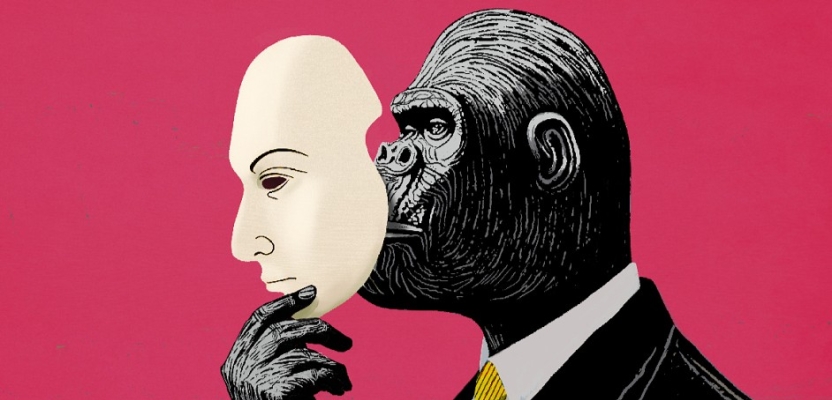Remember those early, heady days of influencers? Brands were ecstatic at the prospect of a new avenue to market—a fresh, exciting way to engage with millennials and Gen Z. And it worked. Not only have influencers gained fame—attending the Met Gala or landing juicy TV gigs—but they’ve also shifted stock. Brands can be grateful, and influencers have enjoyed some sweet freebies along the way.
This isn’t an “all good things must come to an end” story, but there are currently a few hiccups. With all this fame and attention, people are getting a little tired. A bit bored. After all, influencers have heavily populated platforms like Instagram, YouTube, and TikTok. But the gloss has fallen away.

Take Blonde Salad, aka Chiara Ferragni (above). The Italian fashion influencer landed in hot water after it was revealed she made misleading claims about the proceeds of a Pandoro—an Italian Christmas cake—for a charity campaign. She was hit with a €1 million fine.
Stories like that are rare but don’t help. They damage that all-important thing—trust. Consumers want something honest, authentic, and relatable. If influencers can master that, then they can rise again.
Loyal Following
Influencers are a global phenomenon—an industry worth around $24 billion this year—and that could hit $200 billion by 2032. Simply by telling the story of their daily lives, they can market products that appear to fit within those lives. With wide reach, they can touch the parts other bits of marketing can’t—a loyal following hanging on their every word. This new kind of fame has been gained via the conventional route and has moved the dial when it comes to brand ambassadors.
Influencers like Emma Chamberlain (below), Aimee Song, or Addison Rae have hit the heights. Boomers might roll their eyes at the mention of influencers, but their success is due to being at the right place at the right time—and with the right message to get through.

They’ve benefited from a shift in the way millennials and Gen Z like to consume content. Online over print. Smartphones over TV. Ad spend has shifted, and brands have had to follow the money. Not that it’s been easy.
According to Nielsen, 64% of consumers intentionally avoid ads on free video services with commercials, and 59% would subscribe to a streaming service that lets them completely skip ads. Social media influencers can nicely circumnavigate the hard sell.
So What’s Gone (a Bit) Wrong?
First up, we’re facing an oversaturation of social media content. Collective Bias found that only 3% of consumers are profoundly influenced by celebrity influencers to purchase specific products. People are getting bombarded with influencers on their social media channels.
Strategic Thinking
Secondly, the influencer/marketing tie-up is getting a bit messy. Just paying an influencer to promote your product doesn’t result in magic. You need a strategy. You can’t just do this because “it’s what everyone else does.”
With zero thought into who you're partnering with, a brand is looking for a miracle—and an influencer is staring at a backlash. You’re left with unoriginal content and zero relatability. People can see through this a mile off. No one comes out of it well and, at worst, it can be viewed as false advertising.

Sitta Chantarawong (HOMME)
If influencer marketing is to survive, it needs to evolve. And that means being more strategic and thinking creatively about forging new routes to engage with audiences. The “love triangle” of influencers, brands, and agencies needs to understand authenticity. Because without that, you’re just getting lost in a sea of sameness in the world of social.
Believable, credible, and reliable content influences a purchase decision—it carries weight. Humor, approachability, and any content that relates to people’s everyday lives hit the spot. The relatable influencers sit at nano (1,000 to 10,000 followers) or micro (10,000 to 100,000) levels.
Co-Creators
Now might be a good time to give influencers a rebrand. You could argue that the word “influencer” doesn’t entirely do the industry justice—“community leaders,” “content creators,” “ambassadors,” or “partners” work just as well or better. The roles are splintering, and brands are taking full advantage.
They’re also “community casting,” meaning that in the fashion market, it is social media that’s promoting the next campaign model. It makes sense—you engage at a deeper level with the community and unearth someone who truly represents the target market. It worked for niche denim brand Nelle Atelier (below), which needed community casting for its range of clothes for shorter women.

These people are more than influencers—they are co-creators of the brand. They’re your accessible face to an enormous audience.
There’s no one-size-fits-all approach to this. There are nuances to each market. But to succeed, it must be joined up—an affinity between a brand’s values and the communication style of the influencer. They have the community, the vibes that make their followers tick.
The next step in the history of influencer marketing can be positive—one that delivers more bang for a brand’s buck. They might not be everyone’s cup of tea, and snarky articles on their “fall” won’t vanish overnight, but influencers have a place in the marketing mix. Just make sure they’re authentic.







